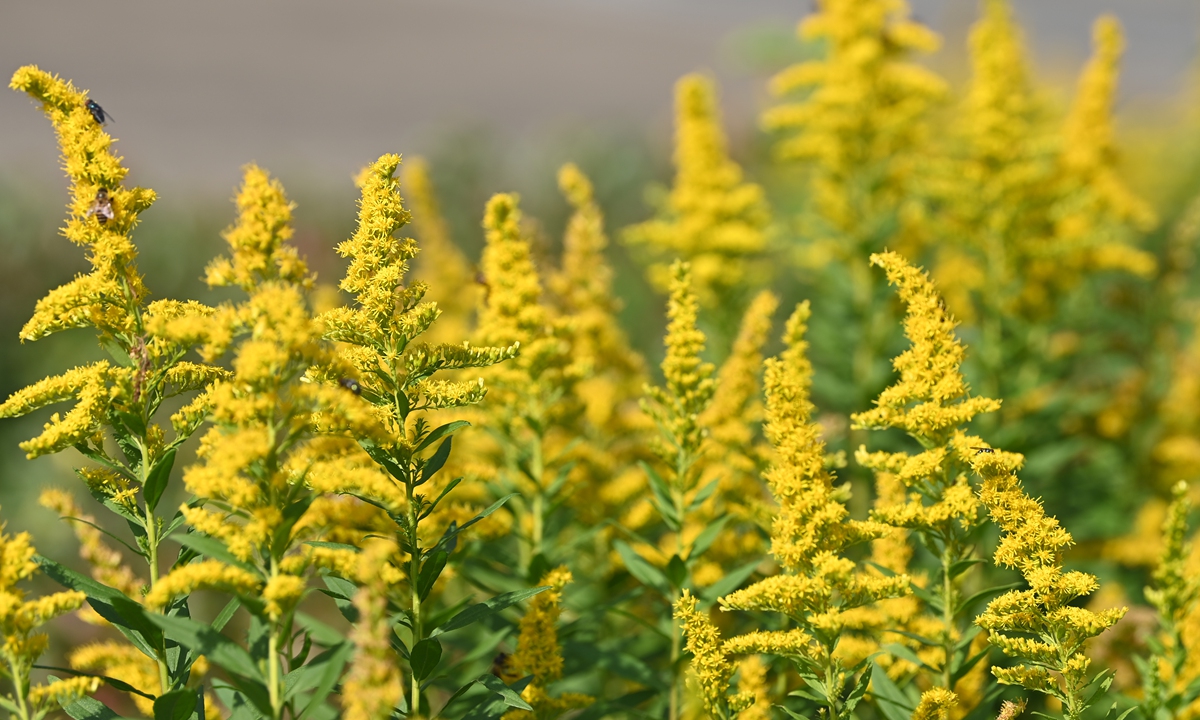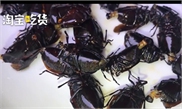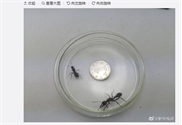
Canada goldenrod Photo: VCG
Chinese people and local authorities are losing no time to wipe out an "ecological killer" - an extremely adaptable alien invasive plant known as the Canada goldenrod - before it enters the seed stage. If not pulled up promptly, each of the plants can produce as many as 20,000 seeds, posing a huge threat to the growth of plants and crops, Chinese environmental experts warned on Wednesday.
Posts flooding social media platforms showed the plant has been spotted by Chinese people across the country recently. Media reports said the plant is spreading alongside the Yellow River to the north, which is one of the major areas to produce rice in China.
Many cities including Zhengzhou in Central China's Henan Province, Wuhan in Central China's Hubei Province, Hangzhou in East China's Zhejiang Province and the municipality of Shanghai, have reported traces of the malignant weeds.
Li Jiamei, a professor in the botany department of Henan Agricultural University, told the Global Times on Wednesday that the plant has become very common in some southern cities such as Shanghai, but it has appeared in provinces in the Yellow River basin in recent years, which posed a great threat to these provinces that rely heavily on crops such as rice.
According to Li, the super-fertile plant will compete with native plants and crops for nutrients and water. A single weed can produce more than 20,000 seeds. It is named as an "ecological killer" since no other plants can survive where Canada goldenrods grow.
The most common way to wipe out the plant is to pull it out and burn it. The most proper periods in a year to do this are in March and April (when it is young) and September to November (before it bears seeds), agriculture experts pointed out.
Originally from North America, the plant has an average height of 2 meters and bright yellow flowers. It was introduced into China in the 1930s and cultivated as an ornamental plant.
However, it has spread widely in recent years in the urban and rural green belts, farmlands, abandoned lands, and alongside national highways and general highways, which is due to its strong survival and reproductive capacity in dry cold areas.
"Introduced species were not given enough attention in the past, so the Canada goldenrod has since spread widely in some southern cities," said Li, noting that the plant is listed as an alien invasive species in China, and it can spread similarly to dandelions.
According to Li, since the Canada goldenrod has native predators in Canada and the US, the local ecological balance can be maintained in those countries, whereas in China, it grows wildly without a natural enemy. Thus, it is necessarily to control the spread of the plant.
According to the latest bulletin of China's environmental conditions released in May, over 660 alien invasive species have been found across China, including 71 species that have caused threats or potentially threaten natural ecosystems.
They have been included in the List of Invasive Alien Species in China, and 219 species have invaded into national nature reserves.
Some of the species were introduced as ornamental plants or for research, while some others just naturally spread to China and some others were brought into China by chance.
To deal with the threats and damage caused by some harmful alien plants such as Canada goldenrods, measures like rooting them up, using chemical reagents to kill them and introducing native predators can be used, according to an article published by Zhang Fengchun, former chief expert of the Institute of Ecology under the Chinese Academy of Environmental Sciences, in July.
Complete legal system and strict examination procedures are also needed to block them from entering China at the very beginning, Zhang said.


